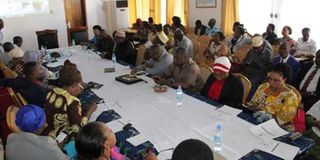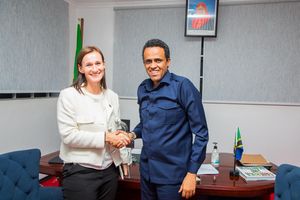Four million men circumcised in Tanzania as part of efforts to combat HIV infection

Members of Parliament (MPs) representing various Parliamentary Committees follow up the discussion during a Workshop on HIV/AIDS organized by the Ministry of Health held on Friday, November 15, 2019 in Dodoma region.
What you need to know:
The government further says it is aiming to circumcise other 2.7million people both adults and children by 2022.
Dar es Salaam. Some 4,456,511 Tanzanian men have been circumcised since the government introduced a Voluntary Male Circumcision Programme in 2009 under the National AIDS Control Programme (NACP) as part of its efforts to alleviate new HIV infection burden.
NACP’s programme officer Dr Susan Mmbando revealed this during a Workshop on HIV/AIDS held in Dodoma region on Friday, November 15, 2019.
During the Workshop, Dr Mmbando further revealed that some 13, 603 children aged 1 day-2 months old have also been circumcised.
In 2013, the Health Ministry in partnership with the partners introduced first early infant male circumcision (EIMC) pilot project in lringa region which is now supported through AIDSFree.
“Infant male circumcision is important because it prevents children from developing infectious diseases such as urinary tract infection (UTI),” said Dr Mmbando.
Scientists say male circumcision probably reduces the risk of HIV infection because it removes tissue in the foreskin that is particularly vulnerable to the virus, and because the area under the foreskin is easily scratched or torn during sex.
In 2018, 1.6 million people were living with HIV in Tanzania. This equates to an estimated HIV prevalence of 4.6 per cent in the same year, 72,000 people were newly infected with HIV, and 24,000 people died from Aids-related illness, according to available statistics.
Despite the numbers, Tanzania has done well to control the HIV epidemic over the last decade. Scaling-up access to antiretroviral treatment has helped Tanzania minimise the impact of the epidemic.
As a result, between 2010 and 2015, the number of new infections declined by more than 20 per cent and the number of people dying from an Aids-related illness halved.
Meanwhile, Dr Mmbando during the workshop further said the government is aiming to circumcise other 2.7 million men by 2022.
Moreover, Dr Mmbando established that the circumcision programme is being implemented in 17 regions with the highest HIV/Aids prevalence and low male circumcision prevalence including Iringa, Njombe, Kagera, Kigoma, Singida and Tabora, to mention but a few.
In Tanzania, institutional efforts to combat HIV/Aids started in 1985 by establishing a National Taskforce within the Ministry of Health.
This was so because the HIV/Aids epidemic was first perceived as a health problem and the initial control efforts were formulated and based within the health sector.
Later on in 1988 this task force was transformed into a fully-fledged Programme-NACP which was launched in April 1988.




